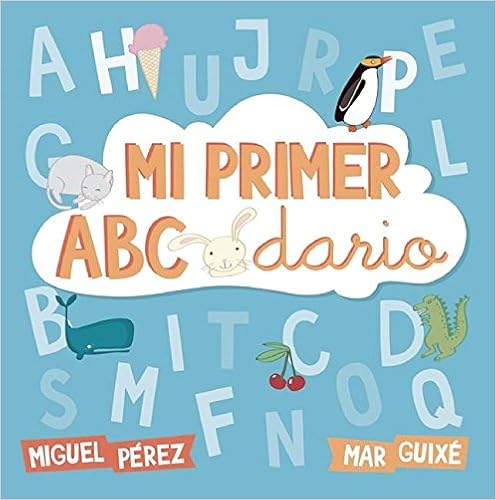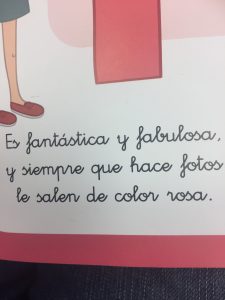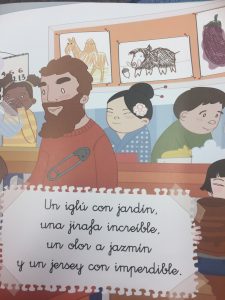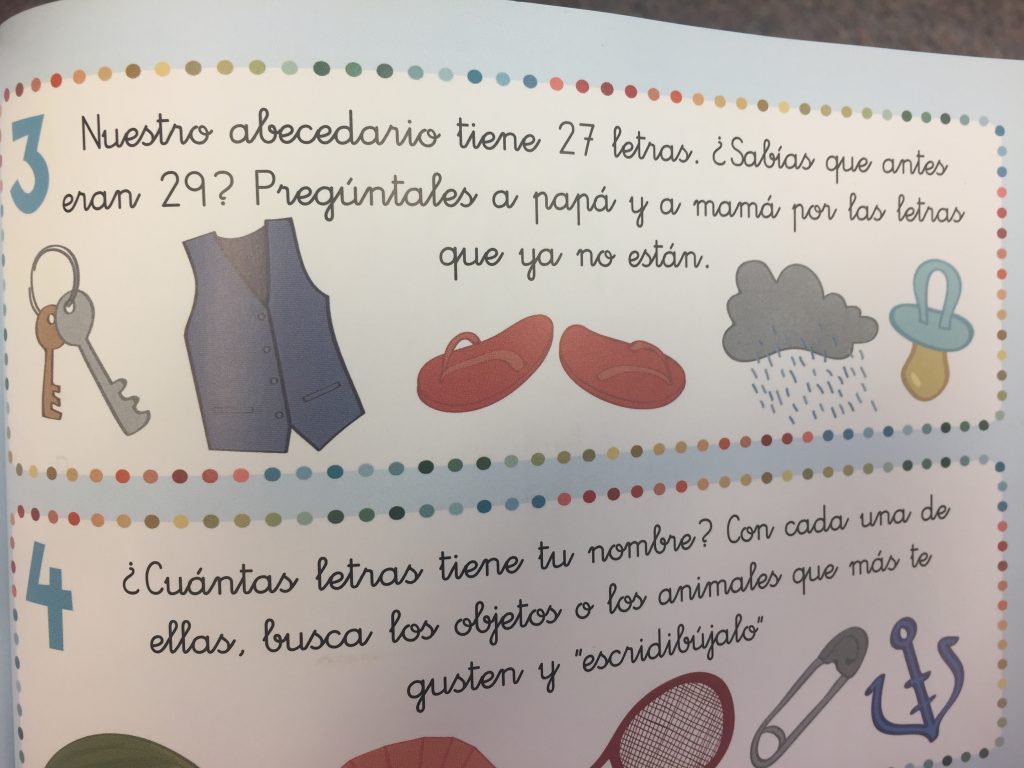 I’m at the library a lot, and I’m a bibliophile. I especially love library books. In Spanish. For small children.
I’m at the library a lot, and I’m a bibliophile. I especially love library books. In Spanish. For small children.
Okay, so I do teach very young children at a homeschool co-op, and even more importantly, my own little ones are on a bilingual journey, but whether you teach littles, have littles, or are just building up a Free Voluntary Reading library, you’ve got to get your hands on Mi primer ABCdario.
A brief thumbs down…
I’m going to start with the one ping I have on this book: cursive. I swear a lot of children’s resources are developed by people who either don’t have kids or didn’t get into their kids’ minds when writing the resource. Putting a lot of cursive in a resource intended for a child anywhere south of 8 years old is a foolish mistake, in my opinion.
A big thumbs up – way up.
And now for what I love.
Which is every single other thing.
Such as, that each page incorporates words that start with the letter in incredibly fun ways.
But come on, every good alphabet book does that. But then, does it turn the words into a seek-and-find? This one does.
And do super fun stuff with the weirdness of the adopted letter W?
And crack jokes about the new 2010 RAE changes?
And invite kids to ask their parents about the 2010 RAE changes with some super subtle sleuthing hints?
In short, I love this alphabet book, and you must have one.
(And I don’t get any kickbacks for saying so, ha.)
5 Comments
Comments are closed.









I’m too old to re-learn the alphabet!
This type of cursive print is quite typical of children’s books published in Spain. The same font is used in silabarios and workbooks intended for children to learn to write. In my understanding, children in Spain are not taught print first and then cursive, as they are in the U.S.
What an interesting difference! Actually I know many children who are no longer taught cursive at all in U.S. schools, though I’ve seen some schools changing their minds about this.
Maybe a silly question, but what do you do with the book in class? How do you make it more contextualized learning and not just teaching the letters? I feel like it is vocabulary and adjusting sounds rather than teaching the alphabet itself.
Hi Talia – not a silly question at all! I actually just read the book with my own kids, and we did the seek & find together. But my kids are mostly bilingual so they can handle that. I think this book is a great addition to a free voluntary reading library in middle & upper grades (especially if you explain the seek & find piece) and with younger kids, I’d do a letter at a time as part of circle time with the alphabet portion of a curriculum, making the input comprehensible and more repetitive. (¿Ven el náufrago? Aquí está. ¡Hola náufrago! Pobre náufrago. Ene: n, n, náufrago.) It’s particularly great for contrasting the verbs buscar, mirar, and ver. I’d also weave it into the primary use of the alphabet: spelling one’s name. If you assign each letter of your name a word used in the book, how would your spelling come out?